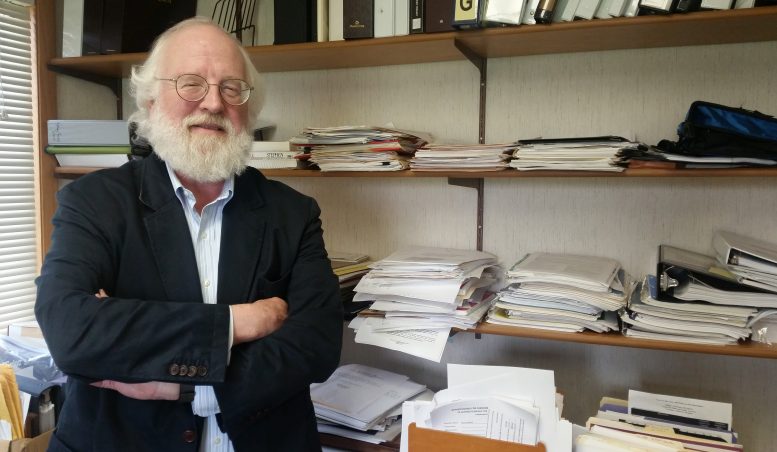By JAN LARSON McLAUGHLIN
BG Independent News
Tom Clemons would love to not have to ask Wood County voters for more money. But then he would also love if the opiate crisis weren’t killing people, and if the state and federal government would not have cut funding.
So on Tuesday, Clemons, the executive director of the Wood County Alcohol, Drug Addiction and Mental Health Services, made his pitch to the county commissioners for the agency’s levy request. The board will be seeking a replacement 1-mill levy plus and an additional 0.3-mill levy.
The levies will be on the November ballot.
Wood County Commissioner Doris Herringshaw said that the commissioners will have to discuss the levy requests before deciding whether or not they will get their blessing as the levies go on the ballot.
“We listened to what he had to say,” she said of Clemons’ presentation. “We’re still at the point where we’re absorbing what he had to say. We’ll be discussing it. We want to make sure it is the right fit for Wood County and for the ADAMHS board.
The current 1-mill levy generates about $2.9 million. The new levies will bring in an additional $1.3 million.
Clemons said the additional funding is needed to keep up with growing needs.
“First and foremost, we think the opiate epidemic is costing us a little over $700,000 a year,” Clemons said last week.
The costs include inpatient and outpatient detox services, recovery housing, clinical services for the Vivitrol program in jail, services for addicted women who are pregnant, help with the Addiction Response Collaboration, short-term residential treatment, help providing medication like Naloxone, outpatient programs, and school-based prevention programs.
“It’s touching everyone,” Julie Launstein, ADAMHS finance director, said of the opiate crisis.
But it appears that Wood County’s opiate programs are working according to Chris Streidl, manager of clinical programs with ADAMHS, who explained that this county has a significantly lower death rate than those being seen in Lucas and Hancock counties.
“We see the numbers,” Clemons said. “This epidemic is not going to go away any time in the near future.”
At the same time as the opiate crisis, the ADAMHS board still needs to deal with other mental health, alcohol and drug addiction issues.
“We’re going to have to look at doing some more mental health housing,” Clemons said. That will include more 24/7 supervised housing and more independent housing.
The agency also sees the need to improve crisis intervention services.
“We have had more deaths due to suicide in the last three years than due to overdoses,” Clemons said. In 2016, there were 20 suicides recorded. And the numbers aren’t looking better this year. “We’re on pace for breaking a record.”
Turning around those numbers will take programming, he said.
“In order to address suicide, you have to have crisis intervention services 24/7, and excellent therapy,” Clemons said.
ADAMHS is looking at a different solution than the brick and mortar Link facility in Bowling Green.
“There are very few people who walk into it,” to get help, Clemons said.
So ADAMHS is interested in offering a mobile crisis response.
“So we can treat the crisis where it’s occurring,” whether that’s at home, in a park, or in a store, he said.
If Wood County were to have a mobile crisis service, an estimated 400 to 500 people would use it annually, Streidl said.
At the same time as seeing rising costs for services, ADAMHS is also seeing a drop in help from the state and federal government.
“Money from the state and feds have really not been there,” Clemons said.
A decade ago, state and federal money made up 60 percent of the ADAMHS budget. Now the local levy dollars have to bear the burden of 75 percent of the budget.
“We have made prudent reductions in our budgets,” he said. “We are conscientious about using taxpayer dollars.”
“Despite our efforts to reduce costs in areas that don’t reduce our system of care, our expenses are still going above our expected revenue,” Clemons said.
“We’re still looking at improving quality of care,” he said. “We’re constantly improving the quality of care for mental health and substance abuse. While it’s costly, it is improving care for residents of Wood County.”





